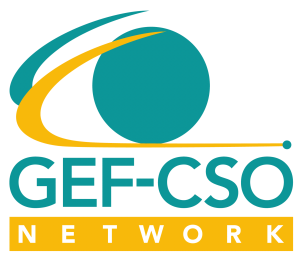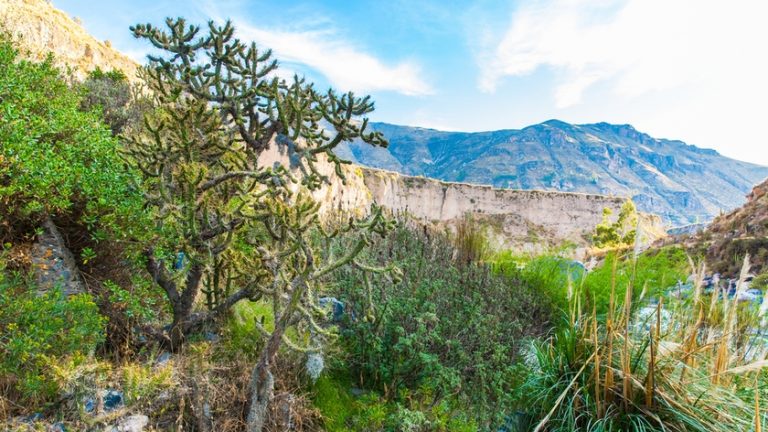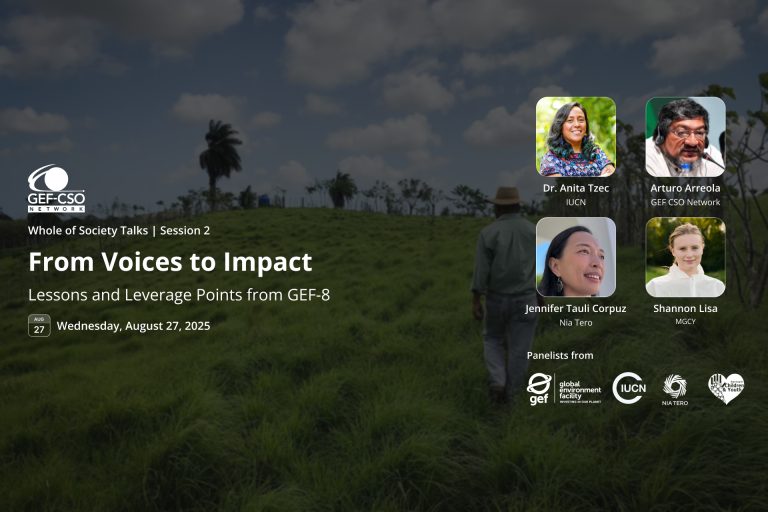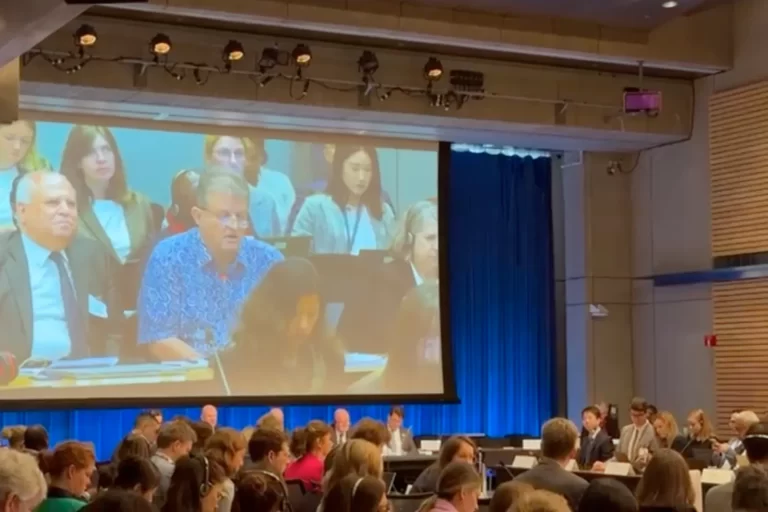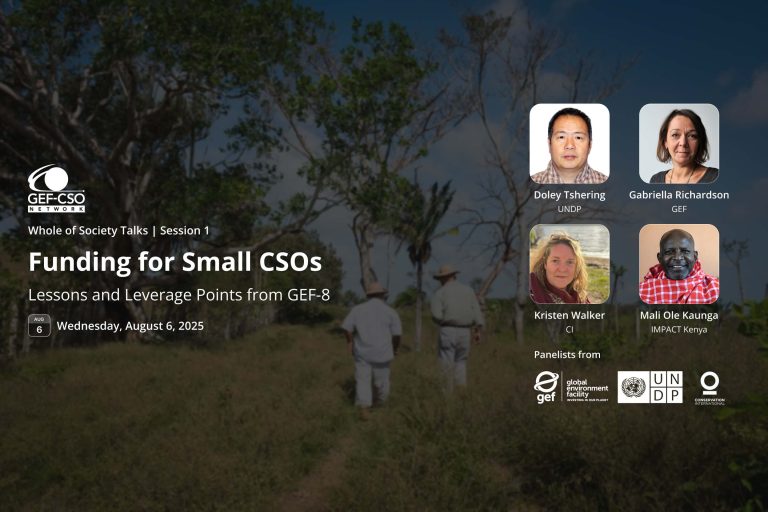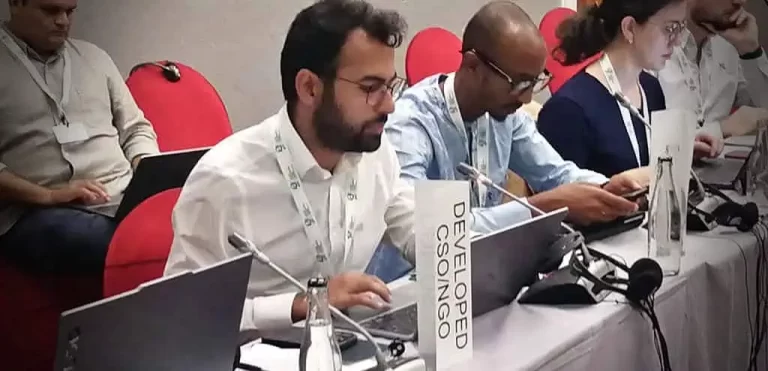Introduction
As GEF-9’s replenishment enters a decisive phase, this session asked a fundamental question: Will the resources truly match the rhetoric? Civil society actors, GEF Council members, and Secretariat representatives gathered to explore how inclusion can move from language to reality through the GEF-9 allocation process.
The discussion focused on ensuring that resources in GEF-9 meaningfully support youth, women, Indigenous Peoples, and civil society organizations (CSOs), not just as token participants, but as fully resourced partners in environmental action.
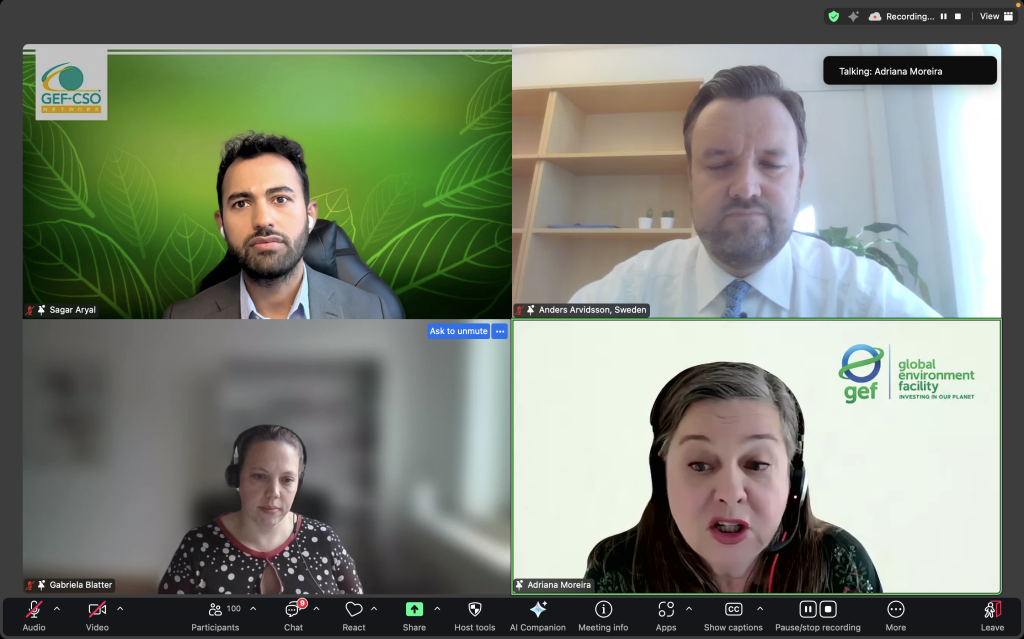
Session Objectives
- Highlight critical funding needs as programming decisions are being shaped
- Discuss allocation across focal areas and cross-cutting themes
- Make the case for directing at least 10% of GEF-9 resources to CSOs
- Explore how CSOs can be embedded in GEF programs—not just treated as add-ons
Speaker Highlights
Adriana Moreira – Head of Partnerships, GEF Secretariat
Adriana provided a frank overview of the challenges in operationalizing inclusion. She emphasized that the Secretariat is actively seeking ways to improve access to resources for CSOs and Indigenous Peoples, including potential innovations in small grants and agency implementation guidelines. She acknowledged the need to go beyond consultation and ensure structured roles for civil society in design and delivery.
Anders Arvidsson – GEF Council Member, Sweden
Representing Sweden’s progressive stance on civil society engagement, Anders noted that “inclusion” must not be left to interpretation—it must be a funded obligation. He highlighted Sweden’s advocacy for ring-fencing a portion of GEF-9 resources for CSOs, emphasizing that civil society delivers on-the-ground results, particularly for vulnerable communities. He also stressed stronger accountability mechanisms for agencies, so inclusion is both implemented and reported on.
Gabriela Blatter – GEF Council Member, Switzerland
Gabriela spoke on the intersection of inclusion and transparency. She shared that Switzerland strongly supports improved tracking of how resources reach grassroots actors. She proposed strengthening the monitoring framework within GEF-9 to include civil society engagement metrics and suggested linking these to project evaluations. She also advocated for greater participation of local CSOs during project formulation—not just implementation.
Faizal Parish – Chair, GEF CSO Network (Closing Remarks)
Faizal concluded with a call to action: “We must go from promises to pathways.” He emphasized the need to secure at least 10% of GEF-9 funds for civil society and underscored the importance of embedding CSOs in every stage—from project planning to implementation and monitoring. He called on Council Members and the Secretariat to co-create a funding architecture that works for those most impacted by environmental crises.
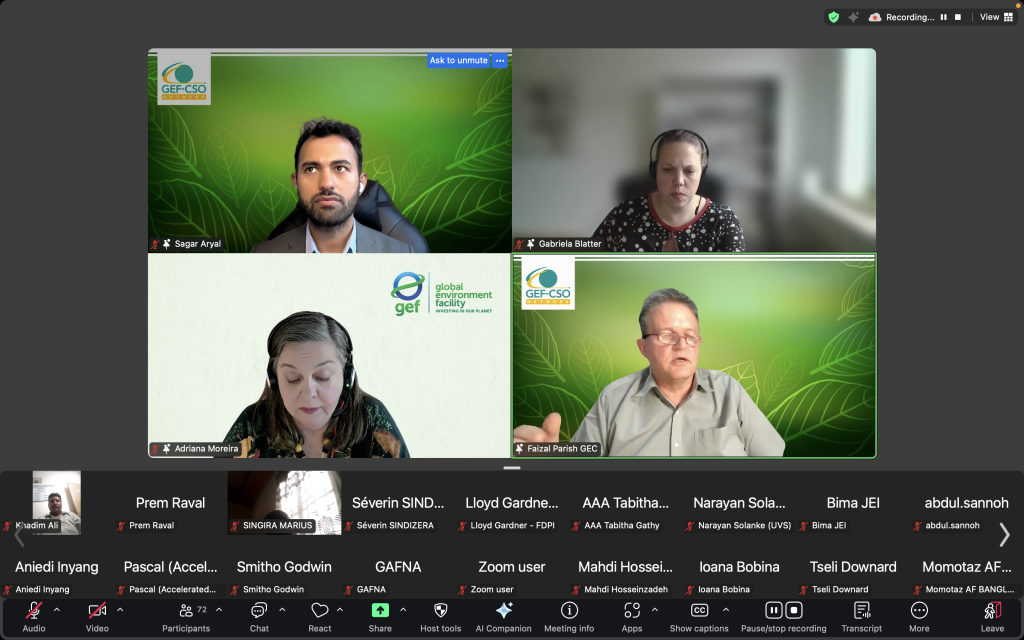
Key Messages
- 🌍 Inclusion is not optional—it’s essential to GEF-9 effectiveness
- 💰 Allocate a dedicated 10% of GEF-9 resources to civil society actors
- 📊 Strengthen transparency and monitoring of fund flows to grassroots
- 🤝 CSOs should be engaged from the design phase—not treated as implementers only
Conclusion
This session made clear that real inclusion in GEF-9 must be backed by real funding. Words must translate into numbers. Participation must be built into budgets. Accountability must be embedded in systems.
As GEF-9 takes shape, all eyes will be on whether the Council and Secretariat will rise to this challenge—and unlock climate funding for those who are on the frontlines of change.
Next up: Stay tuned for the next session of the Whole of Society Talks series.
